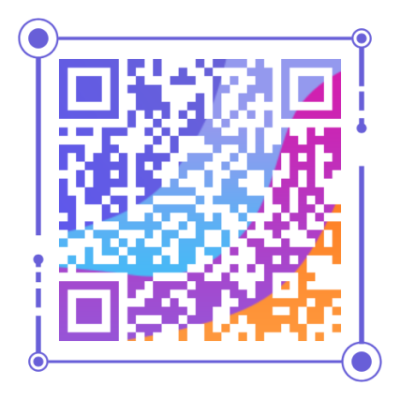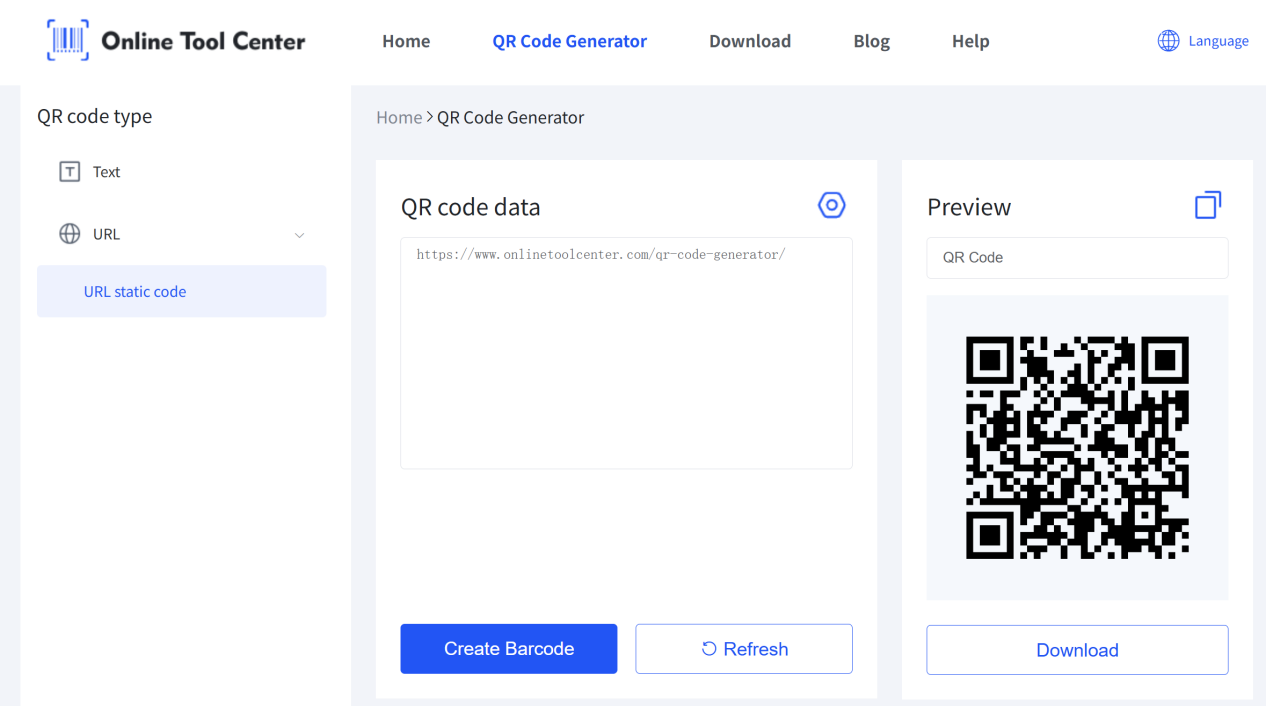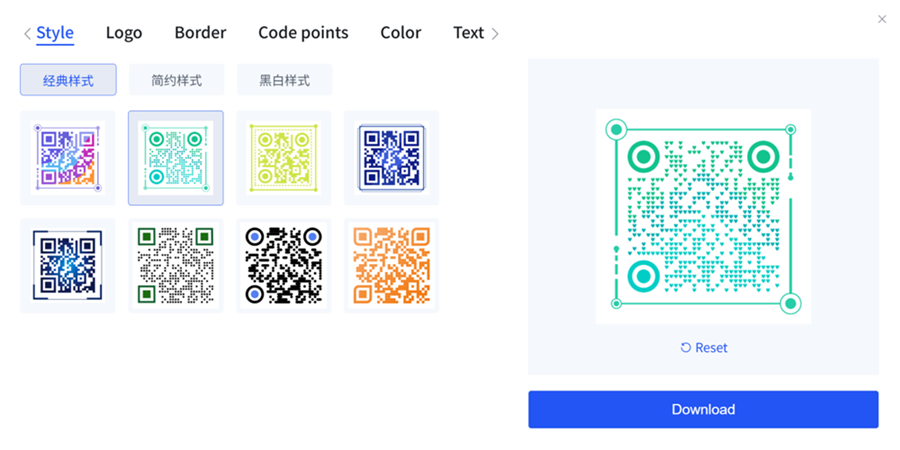
Interested in QR code? What’s quick response code meaning? You see these squares on menus, tickets, and packaging almost daily, yet few people know how they store data or trigger instant actions. This guide covers the essentials: what QR codes are, how they work, different types, and where they're headed next.
Quick Response (QR) Code Meaning
A QR code, short for Quick Response code, gets its name directly from its core purpose: to provide information to a user almost instantly. This focus on speed is what separates it from older technologies.
At its heart, a QR code is a type of two-dimensional barcode that stores data in a grid of black and white squares. Unlike a traditional barcode holding only numbers, a QR code can contain rich information like text, website links, or payment details.
In practice, this is most visible in retail and food service: scan a code on a menu to place an order, tap one on a product label to see nutrition details, or use it at checkout to complete a payment.

With a single printed square, users can be directed to a website, download an app, join a Wi-Fi network, or verify a ticket. That immediacy—transforming a quick scan into direct access—is the essence of Quick Response (QR) Code Meaning.
Quick Response (QR) Code History
QR codes was invented in Japan in 1994, by a Japanese company, Denso Wave, for a very specific reason: to track automotive parts for Toyota at high speed. The traditional barcodes of the time were too slow and couldn't hold enough information. They needed something better that could store more information and be scanned more quickly than the standard UPC symbol.
Their solution was the Quick Response code, a matrix-style barcode that offered not only higher capacity but also resilience to partial damage through built-in error correction.
The name “Quick Response” captured the core design principle: users should be able to scan the code in an instant and receive accurate results without delay. Over time, this innovation evolved into an international standard—formally defined in ISO/IEC 18004—as a symbology capable of encoding alphanumeric, binary, and even Kanji characters.
How Do QR Codes Work?
Before understanding how a QR code is read, it helps to know its structure:
• Finder Patterns (3 big squares): define position and orientation; allow scanning from any angle.
• Alignment Pattern (in larger codes): corrects distortion on curved or uneven surfaces.
• Timing Pattern (alternating line): sets the grid rhythm; helps scanners read module spacing.
• Format Information: stores error correction level and masking pattern.
• Version Information (v7+): indicates size and data capacity.
• Error Correction: Reed-Solomon algorithm rebuilds missing data; works even if 7–30% of the code is obscured.
A QR code encodes information into a matrix of black and white modules on a white background. The scanner first locates the finder patterns to determine orientation, then analyzes the timing pattern and alignment data to map the grid. Each module is interpreted as binary information. Depending on the chosen encoding mode—numeric, alphanumeric, byte, or Kanji—the binary data is reconstructed into meaningful output such as text or a URL.
Advantages of QR Codes
Benefits of QR codes are quite clear:
✔️Speed: they scan in a fraction of a second and work from any angle.
✔️Capacity: they store far more data than a linear barcode, from long URLs to full alphanumeric strings.
✔️Versatility: they fit almost anywhere—on shipping labels, medical wristbands, restaurant menus, or concert tickets.
On top of that, error correction ensures that even if part of the code is scratched, folded, or covered, it can often still be read. This balance of speed, capacity, and reliability is why QR codes have become one of the most trusted ways to connect the physical and digital worlds.
QR Code vs. Barcode: Understanding the Key Differences
So, what’s the real difference between a barcode and a QR code? At first glance they seem similar—both are just patterns printed on paper or packaging. But they don’t work the same way.
Feature | Traditional Barcode | QR Code (Quick Response Code) |
Data Dimension | 1D (One-dimensional) | 2D (Two-dimensional) |
Data Capacity | Low (approx. 20-25 characters) | High (up to 4,296 alphanumeric characters) |
Readability | Requires specific orientation | Can be read from any angle (360 degrees) |
Error Correction | Very limited or none | Built-in, up to 30% of data can be restored |
Data Types | Numeric only | Alphanumeric, binary, Kanji, and more |
Types of Quick Response (QR) Codes
There isn’t just one kind of QR code. In fact, they can be grouped in two main ways: by the technical model behind the design, and by the way they’re used in real life.
Technical Models
• Model 1 QR Code – the very first version, with smaller capacity. It went up to Version 14 and could hold just over a thousand numbers.
• Model 2 QR Code – the improved standard, and the one we see almost everywhere today. It goes up to Version 40 and can pack in over seven thousand numbers, plus letters and symbols.
• Micro QR Code – a tiny version made for tight spaces. You’ll often find these where only a little room is available.
• rMQR Code (Rectangular Micro QR) – similar to Micro QR, but stretched into a rectangle to save even more space while staying easy to scan.
By Function: Static vs. Dynamic Codes
When you create a QR code, you’re making a choice between two very different types: static and dynamic. The one you pick depends entirely on whether you'll ever need to change what it does.
• Static QR Code
A static QR code embeds data directly into its pattern. Once created, it cannot be changed or edited. It's perfect for permanent information, like Wi-Fi QR codes, email address QR codes, and codes for fixed website links that will never change.
• Dynamic QR Code
A dynamic QR code contains a short redirect URL that points to the final destination. This means you can update the destination link at any time without reprinting the code. They also offer valuable tracking and analytics. This makes them ideal for social media QR codes, event QR codes, and any content you might need to change later.
How to Create a QR Code?
Creating a QR code is easier than you think. Whether you need a simple static code or a dynamic one for a marketing campaign, it only takes a few clicks.
With our online QR code generator, you can design, customize, and download a code in minutes—ready to print on packaging, posters, or business cards.

Just follow these three simple steps:
1. Enter Your Data: Start by inputting the website URL, text, contact info, or whatever you want your QR code to link to.
2. Customize the Design: Make your QR code stand out. You can change the colors and code point style, choose a frame, and even add your logo in the center.

3. Download Your Code: Select the best file format for your needs—like PNG for web or SVG for high-quality printing—and hit download.
FAQs About QR Codes
Q1: What does QR stand for?
A: QR stands for Quick Response.
Q2: How do QR codes store information?
A: Information is stored in binary form within the square modules of the grid. Each module represents a “bit” of data.
Q3: Do QR codes need the internet to work?
A: No. The code itself holds the data. However, if the data is a URL, then the device needs internet access to load that page.
Q4: What’s the difference between a QR code and a barcode?
A: A barcode is one-dimensional and typically stores numbers. A QR code is two-dimensional and can hold far more complex data, including links, text, and commands.
The Future of QR Codes
Looking ahead, QR codes will likely evolve beyond simple black-and-white squares. Already we see QR codes combined with NFC tags, or secured with blockchain identifiers to fight counterfeiting.
Some companies experiment with AR-enabled QR codes that launch immersive 3D experiences. Others integrate them into digital ID systems for travel or healthcare.
The core idea remains the same: scan a code, unlock information. But as technology advances, the actions behind those scans will grow richer, smarter, and more integrated with daily life.




